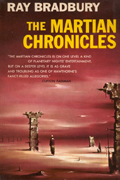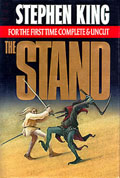
 That’s great, it starts with an earthquake,
That’s great, it starts with an earthquake,
birds and snakes, an aeroplane –
Lenny Bruce is not afraid.
Eye of a hurricane, listen to yourself churn –
world serves its own needs,
regardless of your own needs.
Feed it up a knock,
speed, grunt no, strength no.
Ladder structure clatter with fear of height,
down height. Wire in a fire,
represent the seven games in a government for
hire and a combat site . . .
Six o’clock – TV hour. Don’t get caught in foreign tower. Slash and burn,
return, listen to yourself churn. Lock him in uniform and book burning,
blood letting. Every motive escalate. Automotive incinerate. Light a candle,
light a motive. Step down, step down. Watch a heel crush, crush. Uh oh,
this means no fear – cavalier. Renegade and steer clear!
 That’s right! R.E.M.’s “It’s The End Of The World As We Know It (And I Feel Fine)” debuting in 1987 (album, Document) references the end of the world, perhaps even conjuring up images of Mayan blood letting (see lyrics above, 2nd paragraph). This familiar anthem of the 1980’s is but one of many classic references to a coming apocalypse.
That’s right! R.E.M.’s “It’s The End Of The World As We Know It (And I Feel Fine)” debuting in 1987 (album, Document) references the end of the world, perhaps even conjuring up images of Mayan blood letting (see lyrics above, 2nd paragraph). This familiar anthem of the 1980’s is but one of many classic references to a coming apocalypse.
Perhaps the following will seem familiar as well:
 The Last Man is an apocalyptic science fiction novel by Mary Shelley, which was first published in 1826. The book tells of a future world that has been ravaged by a plague. The novel was harshly reviewed at the time, and was virtually unknown until a scholarly revival beginning in the 1960s. It is notable in part for its semi-biographical portraits of Romantic figures in Shelley’s circle, particularly Shelley’s late husband Percy Bysshe Shelley and Lord Byron. (Wikipedia)
The Last Man is an apocalyptic science fiction novel by Mary Shelley, which was first published in 1826. The book tells of a future world that has been ravaged by a plague. The novel was harshly reviewed at the time, and was virtually unknown until a scholarly revival beginning in the 1960s. It is notable in part for its semi-biographical portraits of Romantic figures in Shelley’s circle, particularly Shelley’s late husband Percy Bysshe Shelley and Lord Byron. (Wikipedia)
Get the Full Text free via Project Gutenberg: The Last Man, Mary Shelley (1826)
 “The Conversation of Eiros And Charmion” is a short story by Edgar Allan Poe, an apocalyptic science fiction story first published in Burton’s Gentleman’s Magazine in 1839. (Wikipedia)
“The Conversation of Eiros And Charmion” is a short story by Edgar Allan Poe, an apocalyptic science fiction story first published in Burton’s Gentleman’s Magazine in 1839. (Wikipedia)
Get the Full Text free via Hypertexts @UVA: The Conversation of Eiros and Charmion, Edgar Allen Poe (1839)
 The Time Machine is a science fiction novel by H. G. Wells, published in 1895 and later adapted into two feature films of the same name, as well as two television versions, and a large number of comic book adaptations. It indirectly inspired many more works of fiction in many media. This story is generally credited with the popularisation of the concept of time travel using a vehicle that allows an operator to travel purposefully and selectively. The term “time machine”, coined by Wells, is now universally used to refer to such a vehicle. This work is an early example of the Dying Earth subgenre. (Wikipedia)
The Time Machine is a science fiction novel by H. G. Wells, published in 1895 and later adapted into two feature films of the same name, as well as two television versions, and a large number of comic book adaptations. It indirectly inspired many more works of fiction in many media. This story is generally credited with the popularisation of the concept of time travel using a vehicle that allows an operator to travel purposefully and selectively. The term “time machine”, coined by Wells, is now universally used to refer to such a vehicle. This work is an early example of the Dying Earth subgenre. (Wikipedia)
Get the Full Text free via PlanetPDF: The Time Machine, H.G. Wells (1895)
 The War of the Worlds (1898), a science fiction novel by H. G. Wells, is the first-person narrative of an unnamed protagonist‘s (and his brother’s) adventures in London and the countryside around London as Earth is invaded by Martians. Written in 1895–97,[2] it is one of the earliest stories that details a conflict between mankind and an extraterrestrial race. (Wikipedia)
The War of the Worlds (1898), a science fiction novel by H. G. Wells, is the first-person narrative of an unnamed protagonist‘s (and his brother’s) adventures in London and the countryside around London as Earth is invaded by Martians. Written in 1895–97,[2] it is one of the earliest stories that details a conflict between mankind and an extraterrestrial race. (Wikipedia)
Get the Full Text free via Project Gutenberg: War of the Worlds, H.G. Wells (1898)
 Shadow on the Hearth is Judith Merril‘s first novel, a post-nuclear war survival story. Some relatively small number of atomic bombs are dropped on major cities; there’s a lot of damage, but not total social collapse. Gladys Mitchell and her two daughters, Barbara (age fifteen), and Ginny (five), struggle through the next week under increasingly difficult conditions. Gladys herself is a rather silly but basically decent woman, who tries to pretend that everything is normal because she believes that that’s her job as the mother. She’s slow to believe important information that calls into question the perfect honesty and perfect judgment of constituted authority, and slow to recognize both the dangers but ultimately willing to take major risks to protect those she has become responsible for. This is an inevitably dated, but nicely done story from the early Cold War. (New England Science Fiction Association)
Shadow on the Hearth is Judith Merril‘s first novel, a post-nuclear war survival story. Some relatively small number of atomic bombs are dropped on major cities; there’s a lot of damage, but not total social collapse. Gladys Mitchell and her two daughters, Barbara (age fifteen), and Ginny (five), struggle through the next week under increasingly difficult conditions. Gladys herself is a rather silly but basically decent woman, who tries to pretend that everything is normal because she believes that that’s her job as the mother. She’s slow to believe important information that calls into question the perfect honesty and perfect judgment of constituted authority, and slow to recognize both the dangers but ultimately willing to take major risks to protect those she has become responsible for. This is an inevitably dated, but nicely done story from the early Cold War. (New England Science Fiction Association)
Get the Full Text free via arthursbookshelf.com : Shadow on the Hearth, Judith Merril (1950)
 The Martian Chronicles is a 1950 science fiction short story collection by Ray Bradbury that chronicles the colonization of Mars by humans fleeing from a troubled and eventually atomically devastated Earth, and the conflict between aboriginal Martians and the new colonists. The book lies somewhere between a short story collection and an episodic novel, containing stories Bradbury originally published in the late 1940s in science fiction magazines. (Wikipedia)
The Martian Chronicles is a 1950 science fiction short story collection by Ray Bradbury that chronicles the colonization of Mars by humans fleeing from a troubled and eventually atomically devastated Earth, and the conflict between aboriginal Martians and the new colonists. The book lies somewhere between a short story collection and an episodic novel, containing stories Bradbury originally published in the late 1940s in science fiction magazines. (Wikipedia)
Get the Full Text free via Google Docs: The Martian Chronicles, Ray Bradbury (1950)
 A Canticle for Leibowitz is a post-apocalyptic science fiction novel by American writer Walter M. Miller, Jr., first published in 1960. Considered one of the classics of science fiction, it has never been out of print and has seen over 25 reprints and editions. Inspired by the author’s participation in the Allied bombing of the monastery at Monte Cassino during World War II, the novel is considered a masterpiece by literary critics. It has been compared favorably with the works of Evelyn Waugh, Graham Greene, and Walker Percy, and its themes of religion, recurrence, and church versus state have generated a significant body of scholarly research. (Internet Archive)
A Canticle for Leibowitz is a post-apocalyptic science fiction novel by American writer Walter M. Miller, Jr., first published in 1960. Considered one of the classics of science fiction, it has never been out of print and has seen over 25 reprints and editions. Inspired by the author’s participation in the Allied bombing of the monastery at Monte Cassino during World War II, the novel is considered a masterpiece by literary critics. It has been compared favorably with the works of Evelyn Waugh, Graham Greene, and Walker Percy, and its themes of religion, recurrence, and church versus state have generated a significant body of scholarly research. (Internet Archive)
Listen to the full novel free via Internet Archive Audio: A Canticle for Leibowitz, Walter M. Miller (1959)
Other top picks for young adult-to-adult reading, offered by our Education Librarian, Michelle Costello, include:
 Alas, Babylon
Alas, Babylon
“It was one of the first apocalyptic novels of the nuclear age and remains popular 53 years after it was first published, consistently ranking in Amazon.com’s Top 20 Science Fiction Short Stories list. The novel deals with the effects of a nuclear war on the small town of Fort Repose, Florida, which is based upon the actual city of DeLand, Florida” (Wikipedia).
The Road
“In a novel set in an indefinite, futuristic, post-apocalyptic world, a father and his young son make their way through the ruins of a devastated American landscape, struggling to survive and preserve the last remnants of their own humanity” (Book jacket).
 When World’s Collide
When World’s Collide
“A runaway planet hurtles toward the earth. As it draws near, massive tidal waves, earthquakes, and volcanic eruptions wrack our planet, devastating continents, drowning cities, and wiping out millions. In central North America, a team of scientists race to build a spacecraft powerful enough to escape the doomed earth. Their greatest threat, they soon discover, comes not from the skies but from other humans” (Book jacket).
 The Stand
The Stand
“When a man escapes from a biological testing facility, he sets in motion a deadly domino effect, spreading a mutated strain of the flu that will wipe out 99 percent of humanity within a few weeks. The survivors who remain are scared, bewildered, and in need of a leader. Two emerge–Mother Abagail, the benevolent 108-year-old woman who urges them to build a community in Boulder, Colorado; and Randall Flagg, the nefarious “Dark Man,” who delights in chaos and violence” (Book jacket).
Hopefully we can all get these read before December 21, 2012!
Happy reading!


